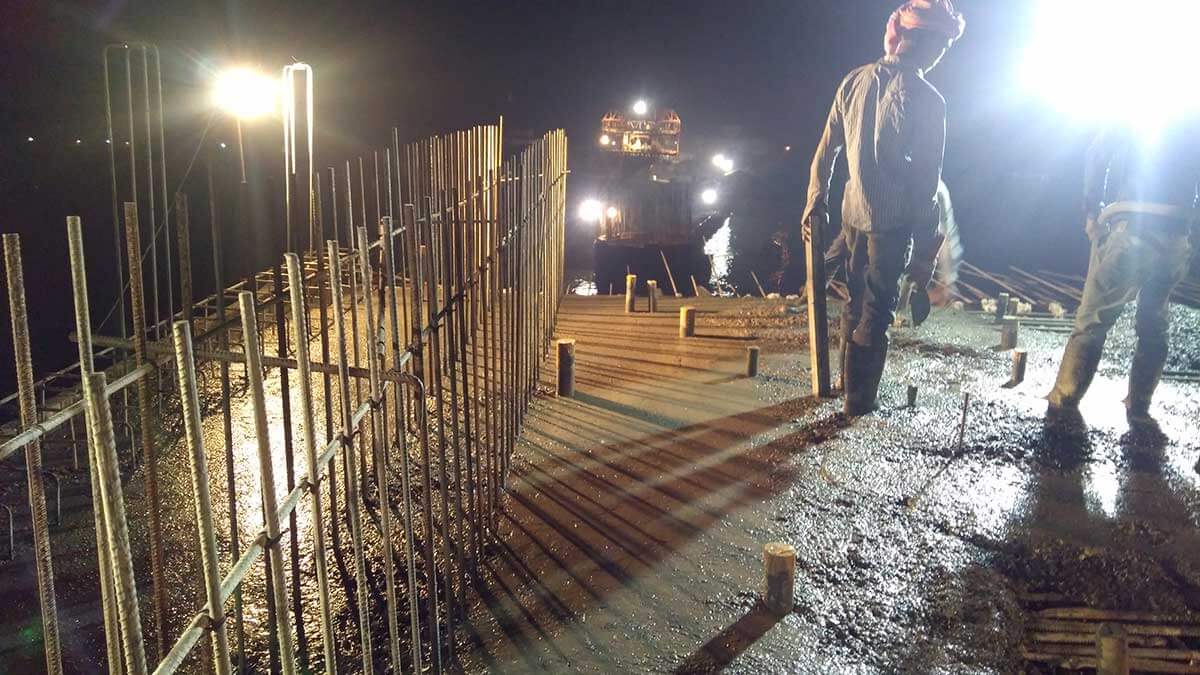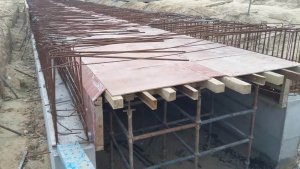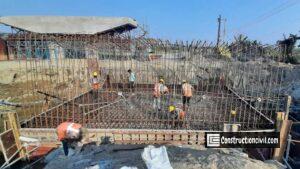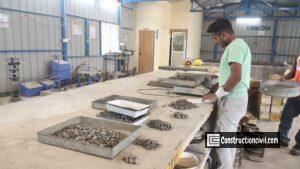Concrete is a composite heterogeneous material made out after mixing raw materials cement, sand, stone, water, and steel (in the case of RCC). It is universally used as a construction material because it can be moulded into any shape one desires. Compared to other structural building materials like steel, timber, and plastics, it provides a large mass at a reasonable cost, strength and durability. The material needs testimonials other than the magnificent construction, dams, powerhouses, bridges, buildings, highways, airfields, flyovers, water reservoirs and sports stadiums which are living monuments and yet the engineer has often known less about the concrete of which these structures are made. The principal properties of concrete, their interrelationships and the elements which control these properties are as follows:
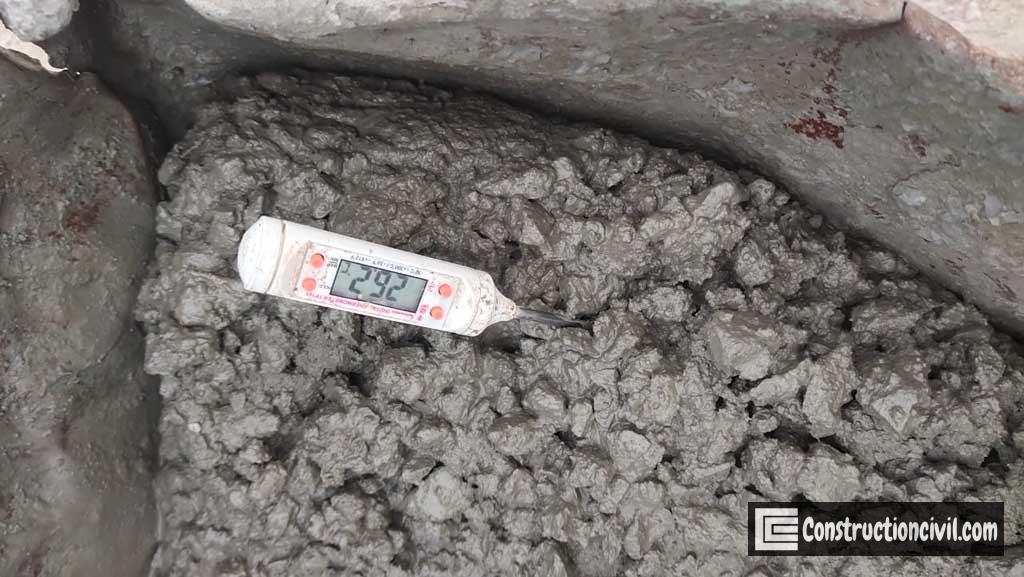
Also, Read: Concrete Ingredients – Important Properties and Tests
- Unlike other structural materials, concrete of a specific property is not available in the market as a ready-made product. Still, it has to be tailor-made at the site to suit a particular purpose.
- No doubt, the manufacturer guarantees the quality of binding material, which is cement, responsible for the strength and other properties of concrete.
- The properties of the concrete depend upon several factors, which are as follows.
- Type and quantity of cement
- Water-cement ratio
- The maximum size of aggregate & its quality, grading, shape and surface texture
- The type of admixture
- Quality control and supervision at all the stages of manufacturing
- Method of placing and curing
- It is worth noting that the ingredients of good and bad concrete are the same, and it is the know-how, often without additional cost or labour, that differentiates between the two.
What is Good Concrete Practice?
It is necessary to know first the requirements of good concrete and secondly how they can be achieved in actual practice to understand good concrete practice.
- Good concrete should be satisfactory both in the plastic and hardened states.
- It must have adequate workability for handling and place inside the forms with the proper flow around reinforcement without segregation. It should be capable of being fully compacted without excessive effort.
- It is also necessary to develop the required strength and durability as per the design requirement.
- All these properties of concrete should be achieved at a reasonable cost to ensure the maximum possible economy in the cost of construction.
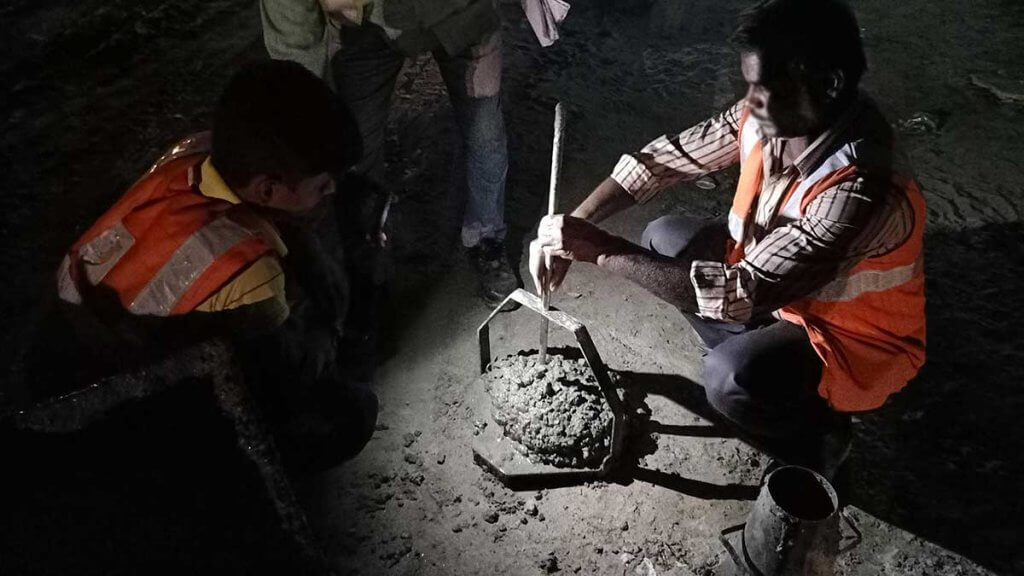
Also, Read: Concreting in Construction – Planning and Execution
Properties of Fresh Concrete:
Concrete Workability:
One of the most significant properties of concrete is workability, and it has been defined as the case with which the given ingredients can be mixed into concrete and subsequently handled, transported, and placed with minimum loss of homogeneity and capable of being appropriately finished.
Workability mainly depends upon the following factors:
- Water content of the concrete mix
- Consistency required for placement
- Type of aggregate, shape, size and texture
- Maximum size of aggregate and its grading.
- The ratio of fine to coarse aggregate
- Characteristic of cement
- Type and a dose of admixture and air-entrained
- Ambient temperature and concrete temperature
- The choice of workability also depends upon the location, conditions, and placement method
Concrete Cohesiveness:
The second properties of concrete in the plastic state is cohesiveness or freedom from segregation. Concrete cohesiveness signifies whether a concrete mixture is plastic, harsh or sticky.
- In well-proportioned concrete with well-graded aggregates of good quality, containing the right quantity of cement and water and transported and handled carefully, segregation is not likely to occur.
- Segregation results in the lack of homogeneity in the final product.
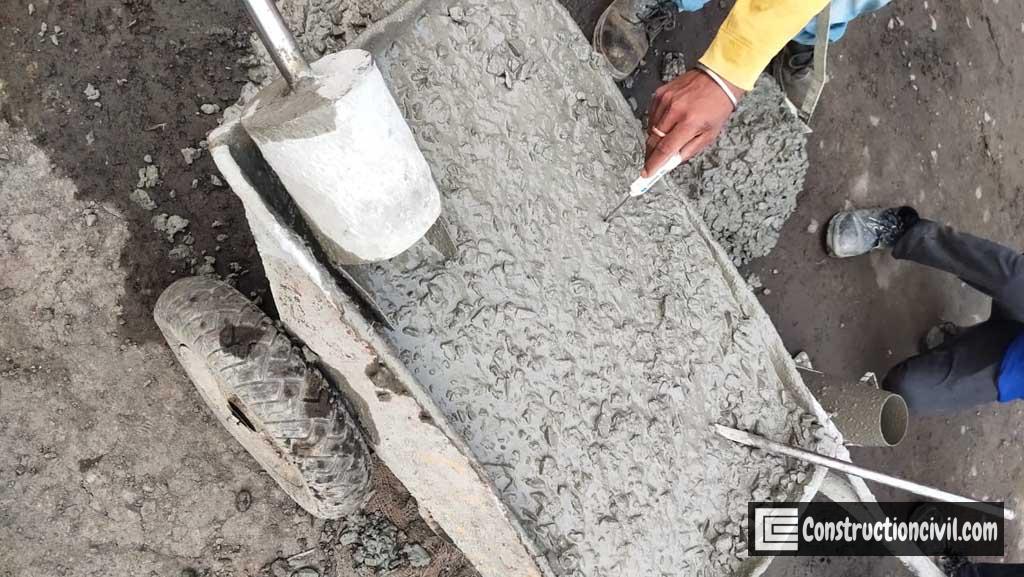
Also, Read: Design Mix of Concrete – Detailed Procedure With Calculation
Bleeding of Concrete:
The third properties of concrete is freedom from bleeding or at least a reduced bleeding tendency. Bleeding of concrete is the form of segregation where water in the mix tends to rise to the surface as the solid constituents cannot hold all the mixed water when they settle downwards.
- The bleed water, when mixed with top layers of concrete during finishing operations or when it brings fine cement particles, result in the formation of laitance, which is porous and weak and results in weak joints or surface with poor resistance to abrasion or dusty surface.
- The bleeding tendency depends upon the properties of cement. Finer grinding, high C3A content or alkali content reduces bleeding, while too high a water-cement ratio causes sore bleeding.
- Adding finery materials such as fine silica, fine sand, clay or pulverized coal help to reduce bleeding, and air entrainment are also useful.
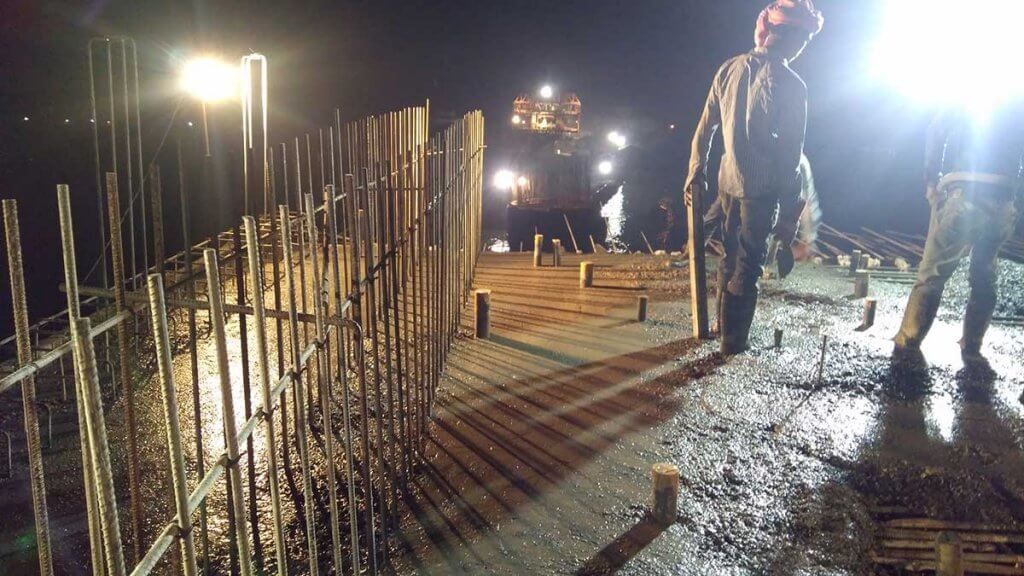
Also, Read: Factors Affecting Strength of Concrete – Construction Civil
Properties of Hardened Concrete:
Properties of concrete in a hardened state and the various factors affecting them are discussed below :
Concrete Compressive Strength:
The usual requirement of good properties of concrete in its hardened state is a satisfactory compressive strength since many other desired properties of concrete, such as tensile strength, flexural strength, density, impermeability, durability etc., are concomitant with high strength. The crushing strength of a fully compacted concrete depends upon-
- Water-Cement ratio
- The quality and characteristics of cement
- Degree of compaction
- Age of concrete
- Temperature and period of curing
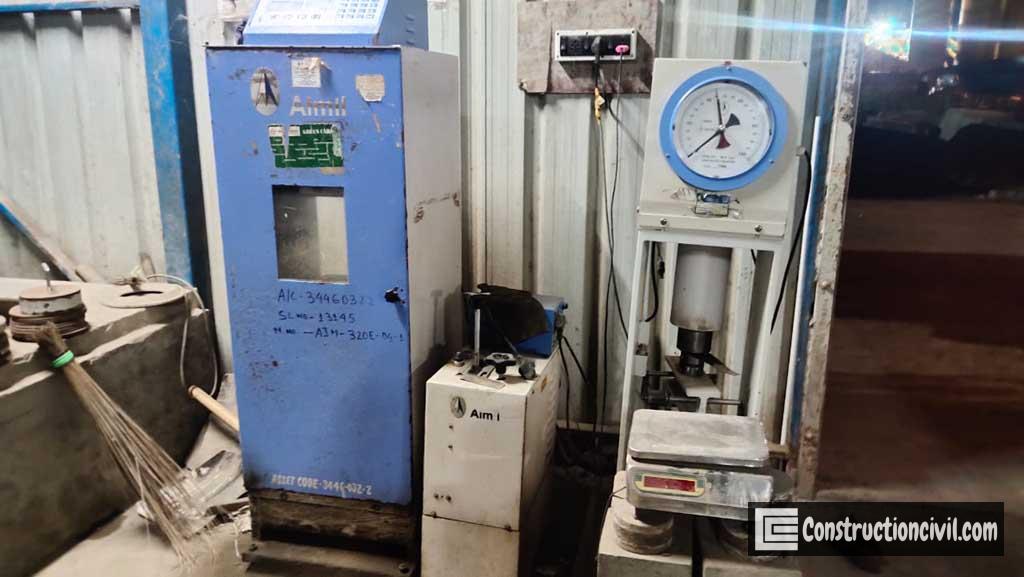
Also, Read: Nondestructive Testing of Concrete – Methods & Guidelines
The Durability of Concrete:
Good concrete should withstand the following effects satisfactorily during service conditions.
Weathering:
Weathering is caused by the disruptive action of freezing or thawing and by expansion and contraction under restraint resulting from temperature variation or by alternate wetting and drying.
Chemical reactions:
Concrete deteriorates due to chemical reactions between alkalis in cement and mineral constituents of aggregates containing reactive silica such as opal and chalcedony.
- Expansive forces created by the reaction of soluble sulphates of sodium, magnesium or calcium with C3A hydrates the cement in the presence of lime to form a monosulphate variety of calcium sulpho aluminate. The reaction is accompanied by considerable expansion and disruption.
- Corrosion of concrete happens due to the formation of soluble products, which are removed by leaching in case of an attack by inorganic and organic acids. Acidic conditions exist in the foundation surrounded by peat human or decomposed vegetation.
- Humic acid, carbonic acid and sulfuric acid formed by pyrites present in shale or clays can attack concrete if not protected.
- Continuous removal of lime formed during hydration by water is often made aggressive by dissolved carbon compounds pressing through cracks or interconnected voids, as in the case of honeycombed concrete or improperly treated construction joints.
Erosion of Concrete:
The principal cause of wearing or erosion of concrete surface is due to the action of flowing water containing abrasive materials or due to the attrition and impact of traffic wear is also caused by cavitation in hydraulic structure or by wind blasting.
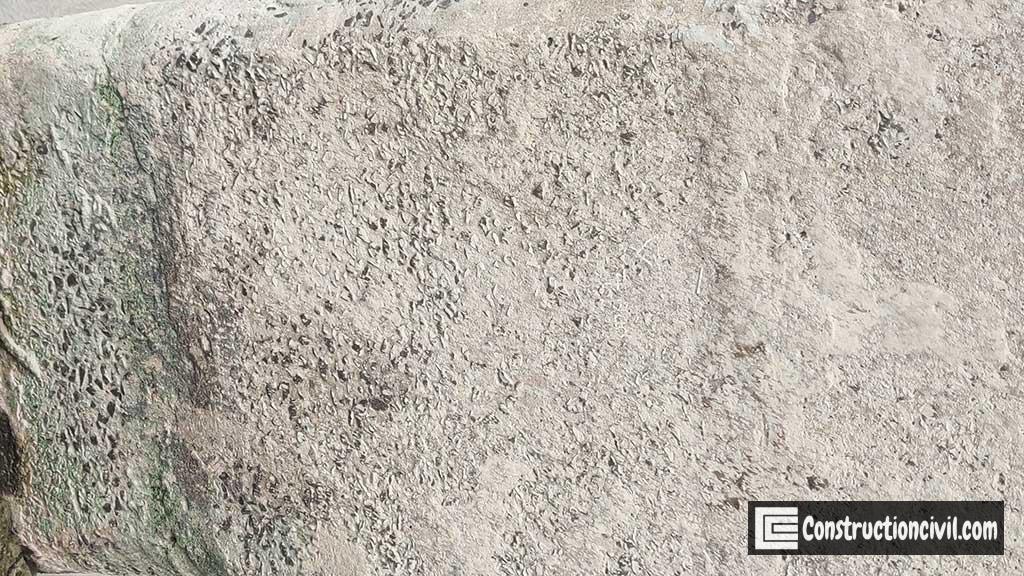
Also, Read: Blowholes/Surface voids/Bugholes in Concrete Surface
Permeability of Concrete:
Problems of durability arise when the concrete is permeable to sulphates, chlorides and acid-bearing solutions. Impermeability imports automatic resistance to all destructive influences. Good, strong, homogenous concrete prepared from good quality aggregates at low w/c ratios properly compacted and cured is practically impervious.
Protection of Reinforcement:
As most structural concrete is reinforced, the essential requirement of good concrete is its ability to protect the embedded steel, even in aggressive marine environments. One of the prerequisites to provide protection and to stall the carbonation from reaching the reinforcement in a polluted atmosphere is to ensure good coverage and fix the limits of chloride level.
Also, Read: Rusting of Iron Rebar in Concrete – Special Repairing
Properties of Concrete involving Dimensional Changes:
Good concrete is capable of resisting dimensional changes, which lead to cracking. The likelihood and the amount of cracking depend on the following :
- Contraction by drying or cooling
- Restraint – may be internal, external, full or partial,
- Elasticity or stiffness,
- Creep
- Tensile strength
For reduced tendency of cracking, essential properties of concrete are :
- Low thermal coefficient of expansion
- Low drying shrinkage
- Absence of internal or external restraint,
- Low elasticity
- High creep
- High extensibility
- High tensile strength
The principal properties of concrete, their interrelationships and the elements which control these properties of concrete are discussed above. A good concrete should meet the above requirements.
Also, Read: Causes, Prevention and Repair of Concrete Surface Defects
